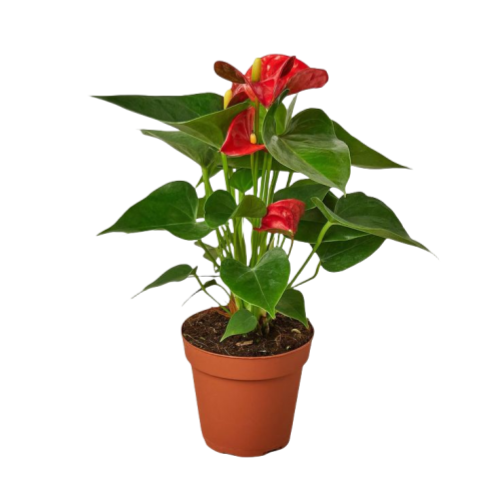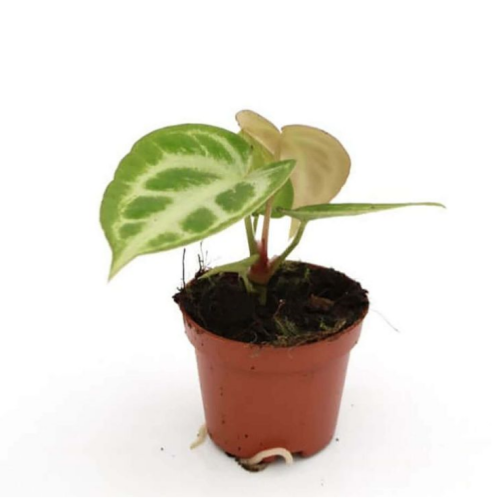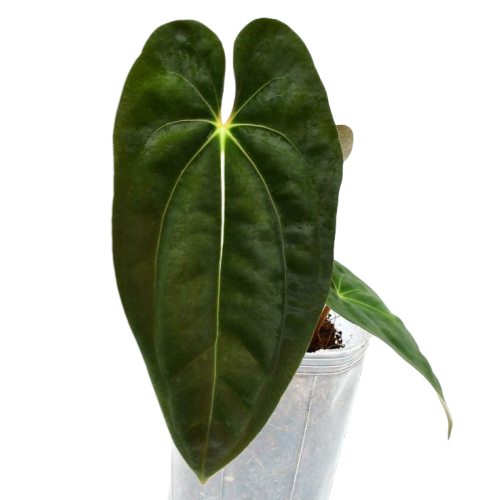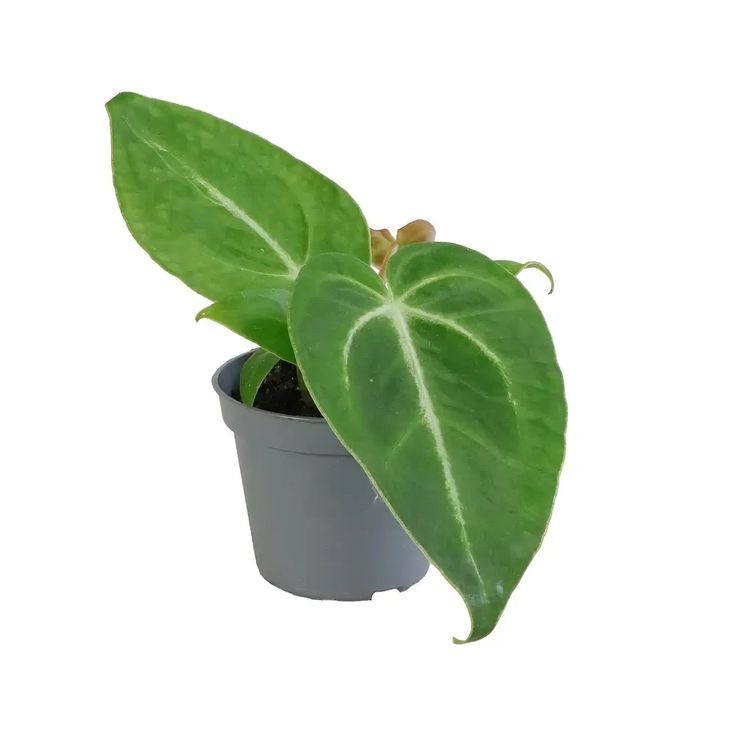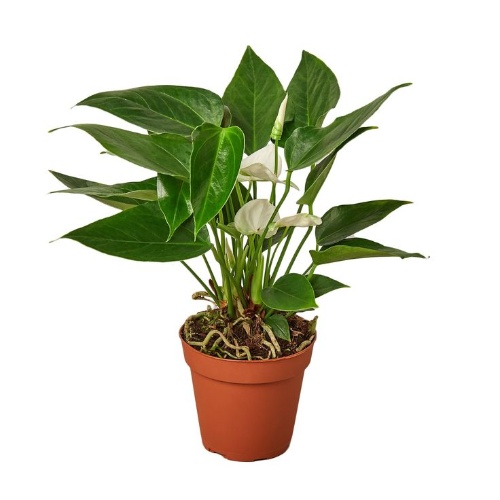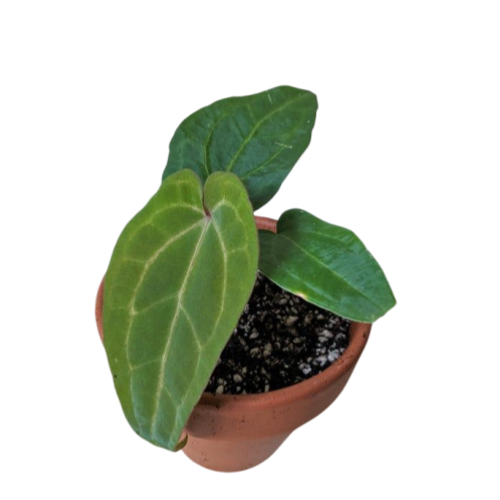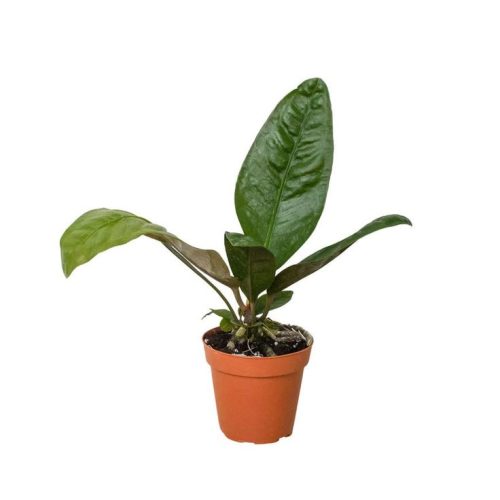Te karauna o te ngahere ngahere: te nui me te huatau o te anthurium andraeanum
Te rangatiratanga o te ao o roto
Te pikinga o te anthurium andraeanum
Ko te Haru mai i nga Rakau Rawa o te Tonga me Amerika Central, Anthurium Andraeanum, te puawai flamingo, e tu ana hei tauira mo te kaha o te tipu. Ko nga whenua taketake ki nga rohe kei reira te tipu o te ngahere me te koiora, kua tipu tenei tipu ki te whakatipu i tona whare taiao, me te tino mahana me te pāmahana mahana.
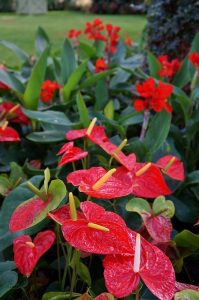
Anthurium andraeanum
Te tipu o te Pirihimana Welforest
E whakaatuhia ana e ona rau ahua-ahua o te ngakau me nga kaihoroi hihiri, Anthurium andraeanum commands attention. As an epiphyte, it reigns above the forest floor, absorbing moisture and nutrients from the air through its aerial roots. This plant’s preference for bright, indirect light and its sensitivity to direct sunlight mirror its rainforest upbringing, where it avoids the scorching sun in favor of dappled light.
Te whakatipu i tetahi waahanga o te ngahere
With a growth habit that is both compact and slow, Anthurium Andraeanum is well-suited for indoor cultivation, bringing a bit of the jungle’s grandeur indoors. It requires a well-draining medium to mimic its epiphytic beginnings and careful watering to prevent root rot, a reminder that even royalty requires proper care. In summary, it is a tropical treasure with a distinct set of care requirements that echo its rainforest origins.
Anthurium andraeanum: te rangatiratanga o te reanga
Ko te huatau ataahua o te anthurium andraeanum
The Anthurium Andraeanum, also known as the Flamingo Flower or Parrot’s Beak, is a botanical marvel with its distinctive and captivating morphology. Its large, glossy, heart-shaped leaves create a lush canvas that sets the stage for the plant’s most striking feature: the vibrant spathes. These elongated, modulated structures emerge from the center, showcasing bold colors that range from red to pink, with a green spathe base cradling a yellow spadix. The spadix, resembling a parrot’s beak, is not only visually striking but also biologically significant, housing the plant’s pollen. The spathe’s shape and coloration serve a dual purpose, attracting pollinators while the spadix’s structure ensures effective pollination.
Te hangarite me te aroha noa o te tipu
The growth pattern of Anthurium Andraeanum is characterized by a compact and symmetrical arrangement of leaves spiraling around the stem, culminating in an aesthetically pleasing form. This slow-growing plant, with its relatively small stature, is well-suited for indoor cultivation, making it an ideal choice for those seeking to bring a touch of the rainforest’s vibrancy into their homes. The Anthurium Andraeanum’s morphological features are a harmonious blend of functionality and flamboyance, reflecting its adaptation to the rich tapestry of the rainforest and its role as a focal point in any indoor garden.
He whakaaturanga ahuwhenua
Ko te rau o te tipu o te anthurium andraeanum
Anthurium Andraeanum, renowned for its flamboyant flair, boasts large, glossy leaves that are the epitome of tropical elegance. These leaves, dark green and heart-shaped, provide a dramatic backdrop to the plant’s most striking feature. Each leaf is a testament to the plant’s vibrant personality, offering a touch of the exotic that enhances any setting.
Ko te Maamaa me te Spadix
The true showstoppers of Anthurium Andraeanum are its spathes and spadix. The spathes, long and waxy, come in a vibrant spectrum of colors, with reds and pinks being the most prominent. They cradle a central spadix, a club-shaped spike adorned with minuscule flowers. Emerging from the tip of the spathe, the spadix resembles a parrot’s beak, earning the plant its nickname “Parrot’s Beak.” The spathe’s bold colors attract pollinators, while the spadix houses the plant’s reproductive structures, with female flowers at the base and male flowers above, creating a stunning and functional floral display.
Ko te anthurium andraeanum, i whakanuihia mo ona tae kanapa me nga tae hihiri, he tino pai ki te whakapaipai o roto. Ko tenei tipu kaore i te aroha noa mo tona ahua ataahua engari mo tona wa pua-roa tonu me te tiaki ngawari, he tipu whakapaipai i roto i nga kaainga me nga tari. Kei te whakamahia i te nuinga o nga puawai tapahi paparahi me nga tipu kohua nui, ka taea hoki te whakatokia i te huarahi kari marū me nga taha o te wai mo nga kaupapa whakapaipai. Ano, na te mea nui ki ona momo ataahua me nga momo rereke, ko te anthurium andraeanum e whakamahia ana i nga whakaritenga puawai toi, me te taapiri i te huatau o te tuawhenua ki nga kaupapa maha.





